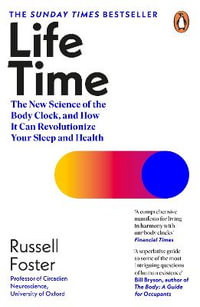| Preface | p. vii |
| Introduction to Hypnotherapy | p. 1 |
| Why is Hypnotherapy the Answer? | p. 1 |
| Which Title Do We Use: Hypnotist, or Hypnotherapist? | p. 3 |
| The Biggest Hypnotic Secret Revealed | p. 5 |
| Charles Tebbetts: a Master Teacher | p. 6 |
| Learn the Art of Hypnosis First | p. 8 |
| Who Should Teach Hypnosis? | p. 10 |
| Truth Removes Fear | p. 13 |
| The Purpose of This Book | p. 14 |
| Hypnotherapy Associations Originally Recognizing This Course | p. 17 |
| The Preinduction Interview | p. 19 |
| Building and Maintaining Rapport | p. 20 |
| Allaying Fears | p. 22 |
| Building Mental Expectancy | p. 25 |
| Gathering Information | p. 26 |
| The Importance of Choice | p. 29 |
| The Four Cornerstones of Successful Hypnotherapy | p. 31 |
| Overview | p. 32 |
| Post-hypnotic Suggestion and Imagery | p. 34 |
| Discover the Cause | p. 35 |
| Release | p. 37 |
| Subconscious Relearning | p. 38 |
| Additional Comments | p. 39 |
| The Benefits Approach | p. 41 |
| The Subconscious Resists Force | p. 41 |
| Identifying the Benefits | p. 42 |
| Explain the Role of Imagination | p. 44 |
| What about the Price of Change? | p. 45 |
| Doing Hypnotherapy: Benefits Approach | p. 46 |
| What Are Typical Client Benefits? | p. 47 |
| What Do You Say? | p. 49 |
| After Hypnosis | p. 49 |
| The Next Session | p. 50 |
| Mapping the Motivation | p. 50 |
| Why Not Begin with Advanced Techniques? | p. 51 |
| Scripts for Progressions | p. 51 |
| Non Smoking Script, Benefits Approach | p. 52 |
| Weight Management Script, Benefits Approach | p. 56 |
| Anchoring and Triggers | p. 61 |
| Triggers of Habit | p. 61 |
| Anchored Memories | p. 63 |
| Anchored Attitudes and Desires | p63 |
| Anchored Emotions | p. 64 |
| Anchoring and Hypnotherapy | p. 65 |
| Peaceful Place (or Safe Place) | p. 66 |
| Peaceful Place Meditation | p. 66 |
| Techniques to Discover the Cause | p. 69 |
| Does the Client Know the Cause of a Problem? | p. 70 |
| Ideomotor Responding | p. 71 |
| Seven Psychodynamics of a Symptom | p. 74 |
| Script for Psychodynamics | p. 80 |
| Age Regression | p. 82 |
| The Affect Bridge Technique | p. 82 |
| Dream Interpretation | p. 84 |
| Parts Therapy | p. 85 |
| When a Client Fails to Respond… | p. 86 |
| One Final Caution! | p. 86 |
| Regression Therapy | p. 87 |
| Spontaneous Regression | p. 88 |
| Guiding vs. Leading | p. 90 |
| Client Preparation | p. 97 |
| Regression Techniques to Discover the Cause | p. 103 |
| Abreactions and Release | p. 110 |
| Subconscious Relearning | p. 121 |
| Concluding the Session | p. 122 |
| Additional Hypnotic Advice | p. 123 |
| Parts Therapy | p. 125 |
| Parts Therapy: What Is It? | p. 125 |
| Variations of Parts Therapy | p. 127 |
| When to Use Parts Therapy | p. 132 |
| Before You Begin | p. 133 |
| The Therapist's Role: Mediator | p. 134 |
| How to Get Results | p. 135 |
| Preparation | p. 136 |
| The 11-Step Process | p. 137 |
| Concluding the Session | p. 150 |
| Cautions (Potential Pitfalls) | p. 151 |
| Examples of Successful Parts Therapy | p. 161 |
| Parting Thoughts | p. 165 |
| Other Rapid Change Techniques | p. 167 |
| Imagery | p. 168 |
| Systematic Desensitization | p. 174 |
| Implosive Desensitization | p. 175 |
| Desensitization by Object Projection | p. 176 |
| Silent Abreaction (Reframing) | p. 177 |
| Inner Guide | p. 179 |
| Verbalizing | p. 179 |
| Direct Suggestion | p. 181 |
| Indirect Suggestion | p. 182 |
| Important Advice from Charles Tebbetts | p. 182 |
| What about Aversion Therapy? | p. 183 |
| White Light Healing Technique | p. 187 |
| Past Life Therapy | p. 188 |
| Other Cautions | p. 188 |
| Phobias, Fears and Anxieties | p. 195 |
| Simple Phobias | p. 196 |
| Complex Phobias | p. 196 |
| Sensitizing Event(s) | p. 197 |
| Activating Event | p. 198 |
| Handling the Preinduction Interview | p. 199 |
| Potential Therapy Techniques for Phobias | p. 200 |
| Now What? | p. 206 |
| Glossary (of common phobias) | p. 207 |
| Putting It Together | p. 209 |
| Successes Facilitated | p. 209 |
| A Few of My Successes | p. 214 |
| Student Therapy Successes | p. 219 |
| A ôMiracle on Demandö | p. 225 |
| Past Life Regressions | p. 241 |
| Possible Explanations | p. 242 |
| Spontaneous Past Life Regression | p. 245 |
| Ethics | p. 247 |
| Techniques to Initiate Regression | p. 250 |
| Guiding vs. Leading | p. 256 |
| Past Life Abreactions | p. 258 |
| Additional Remarks | p. 260 |
| Peak Performance | p. 263 |
| Power Points for Success | p. 263 |
| Why Use Regressions? | p. 264 |
| Choosing Power Points | p. 265 |
| The Session: Celebrate Your Success! | p. 266 |
| Post Hypnosis Discussion | p. 270 |
| Who Can Benefit? | p. 271 |
| Doing It! | p. 272 |
| Motivation Mapping | p. 275 |
| The Five Subconscious Motivators | p. 276 |
| Objectives of Motivation Mapping | p. 279 |
| When is Motivation Mapping Used? | p. 280 |
| Which Session is Best? | p. 281 |
| Completing the Map | p. 281 |
| Mapping a Smoker | p. 283 |
| Mapping for Weight Management | p. 291 |
| Mapping Other Habits | p. 298 |
| Scoring | p. 298 |
| Now What? | p. 300 |
| Sources of Subconscious Motivation | p. 309 |
| Repetition | p. 310 |
| Authority | p. 312 |
| Desire for Identity (ego) | p. 314 |
| Hypnosis/Self-Hypnosis | p. 317 |
| Emotion | p. 318 |
| Final Comments | p. 320 |
| Common Potential Applications of Hypnotherapy | p. 323 |
| Anger and Stress Management | p. 324 |
| Confidence and/or Self-esteem | p. 326 |
| Depression | p. 327 |
| Forensic Hypnosis | p. 328 |
| Grief Therapy | p. 329 |
| Habit Control | p. 330 |
| Impotence | p. 333 |
| Medical Uses of Hypnosis | p. 334 |
| Memory and Study Habits | p. 340 |
| Multiple Personalities (D.I.D.) | p. 342 |
| Phobias | p. 344 |
| Public Speaking | p. 344 |
| Remembering Lost Items | p. 344 |
| Sales and Business Motivation | p. 345 |
| Sexual Abuse | p. 346 |
| Sports Enhancement | p. 348 |
| Stuttering | p. 349 |
| Substance Abuse | p. 349 |
| Suicidal | p. 353 |
| Test Anxiety | p. 353 |
| Tinnitus | p. 354 |
| Ongoing Training and Professional Improvement | p. 355 |
| The Journey Continues… | p. 357 |
| Bibliography | p. 363 |
| Index | p. 367 |
| Table of Contents provided by Ingram. All Rights Reserved. |
























